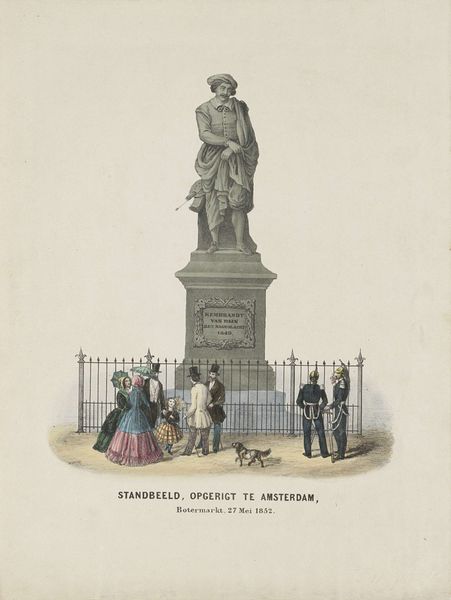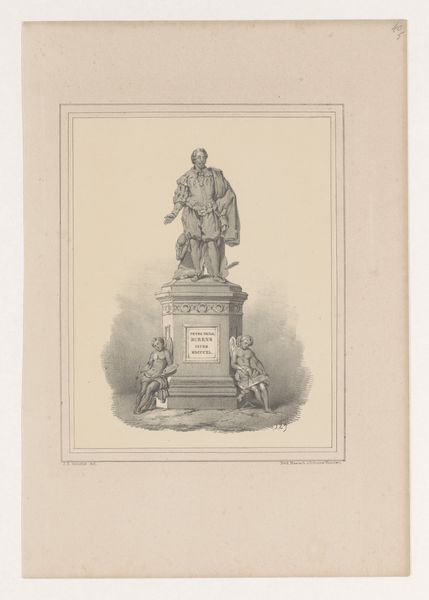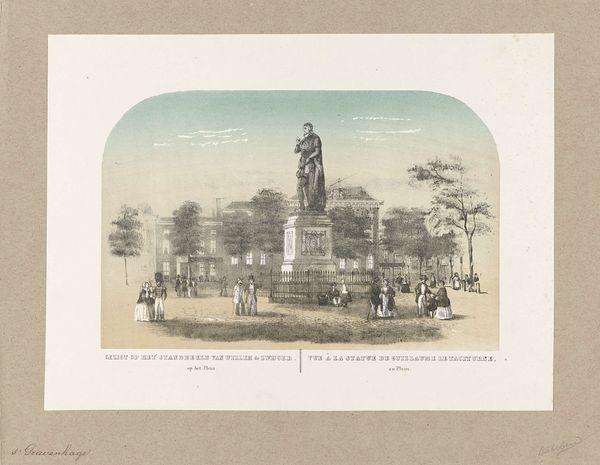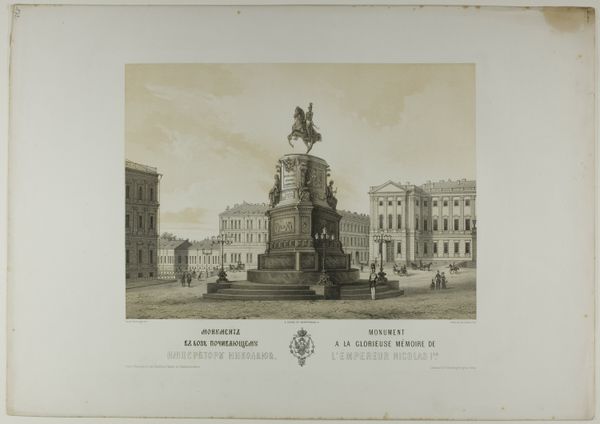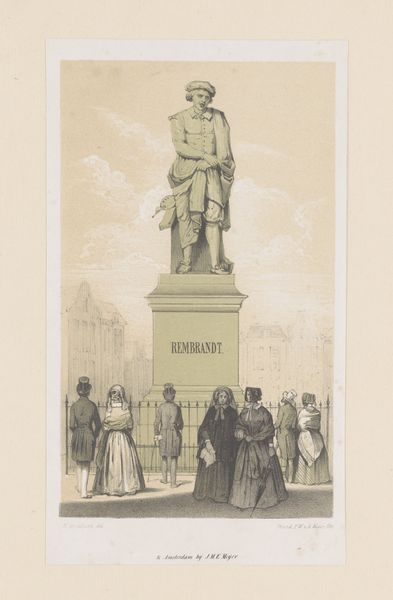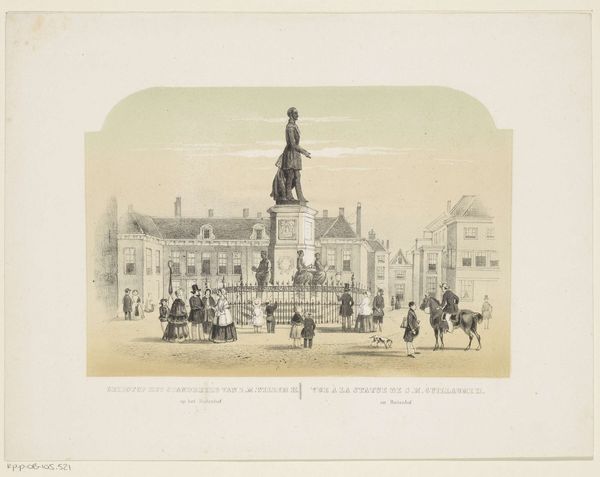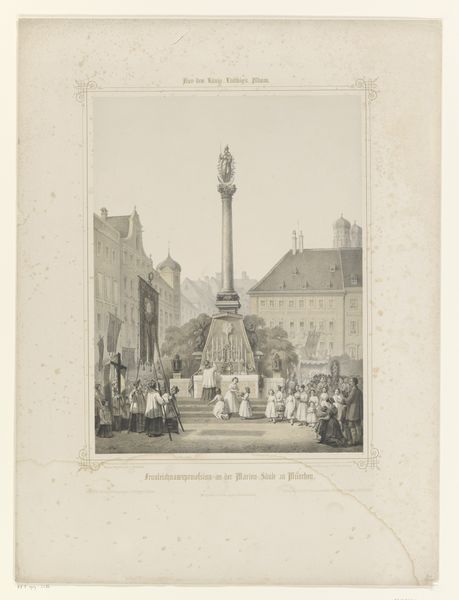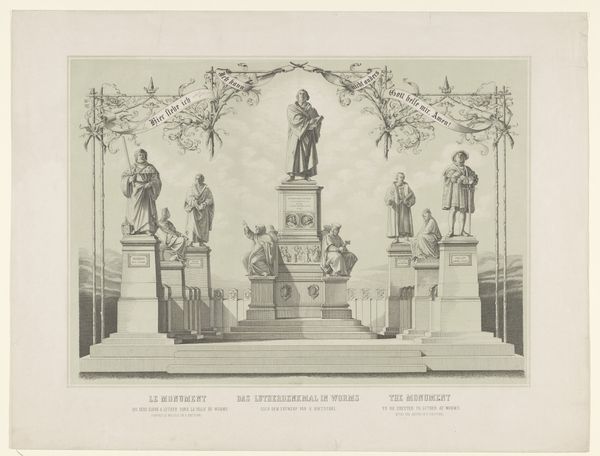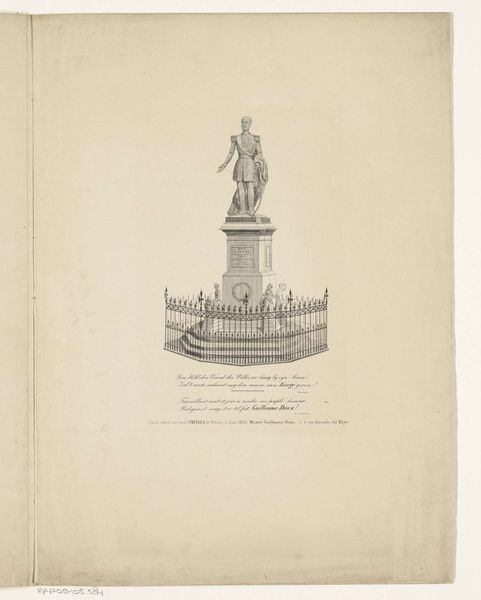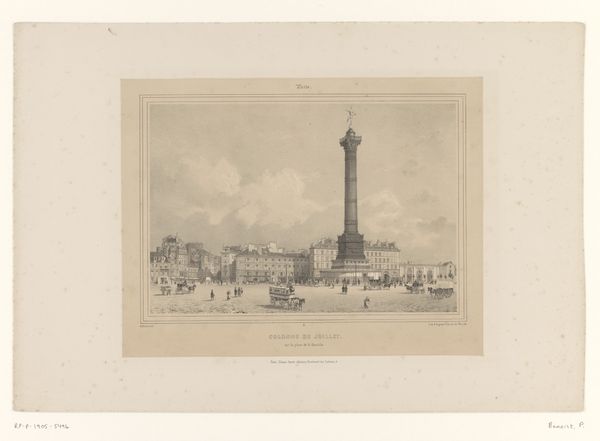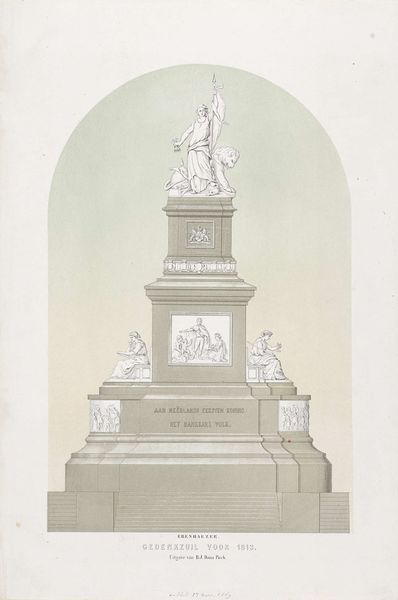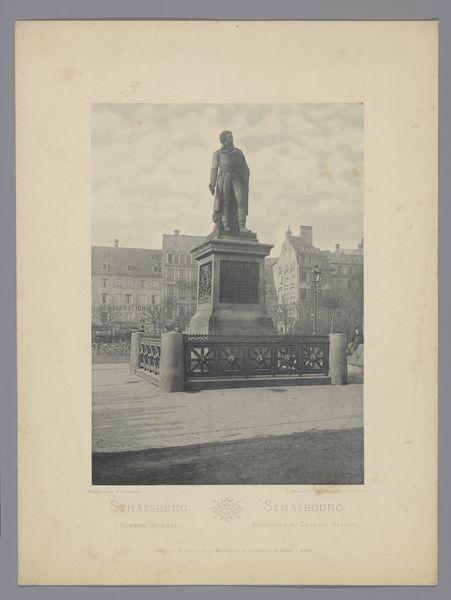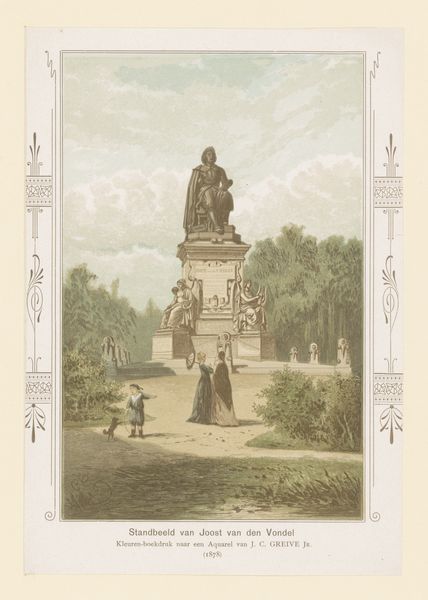
Standbeeld van Willem II, koning der Nederlanden, op het Buitenhof te Den Haag 1853 - 1871
0:00
0:00
Dimensions: height 583 mm, width 439 mm
Copyright: Rijks Museum: Open Domain
Editor: Here we have an engraving from between 1853 and 1871 depicting the statue of Willem II in The Hague, currently housed at the Rijksmuseum. It has this stately, civic quality... almost propagandistic in how it idealizes the city square and the monument. What sociopolitical narratives do you think this piece participates in? Curator: The engraving certainly presents a constructed vision. Beyond simply commemorating Willem II, consider what this image *does*. Neoclassical monuments, and their representations, often served to solidify power and legitimize the ruling class, didn’t they? The figures observing the statue seem carefully posed, almost reverent. What message is conveyed by their presence and social status? Editor: You're right, the people at the base look almost like extras on a movie set, gazing upwards and passively absorbing a very calculated sense of history. How might this depiction shape public memory and national identity? Curator: Exactly. And the clean lines of Neoclassicism… the implied order and reason... consider the ways this aesthetic might reinforce notions of Dutch national identity during this period. What’s absent from the engraving is also important: What perspectives are actively excluded? Does it reflect the complex realities of the diverse populations living in the Netherlands at the time, or does it push a specific, homogenized vision? Editor: So, in thinking about absence, we're prompted to investigate the narratives of marginalized communities that were not part of the intended audience, broadening our view to encompass historical complexities and injustices? I'm understanding a new role for engravings like this; they aren't transparent windows, but powerful tools of cultural engineering. Curator: Precisely. It’s a potent reminder that art never exists in a vacuum. Understanding its historical context and social function unlocks deeper meaning.
Comments
No comments
Be the first to comment and join the conversation on the ultimate creative platform.
